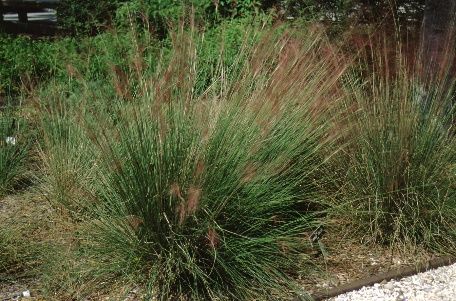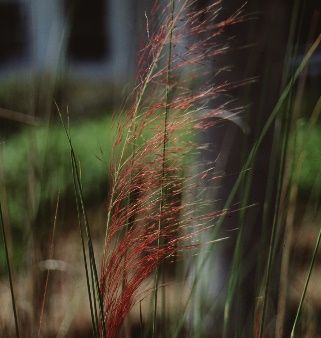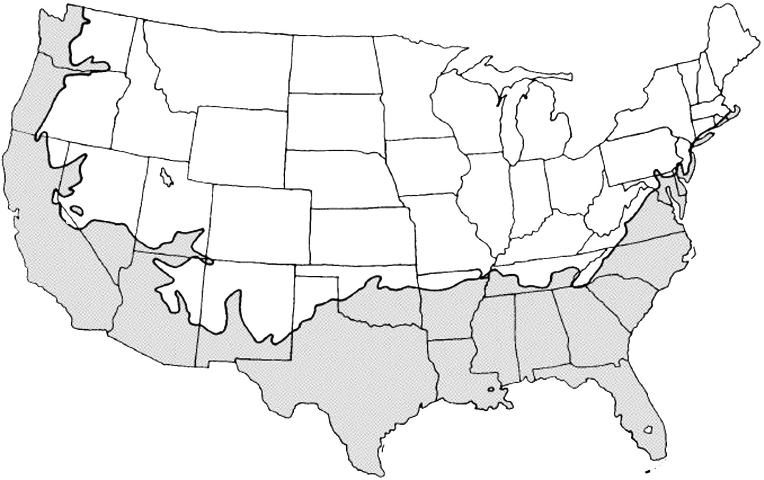Introduction
Muhly grass has a clumping form, growing 3 to 4 feet tall and about as wide. A stiff, upright growth habit makes this markedly different from many other grasses. Delicate, purple flowers emerge in the fall well above the foliage and can literally cover the foliage. It is native to pine flatwoods, coastal upland and beach dunes, and sandhill communities. This grass is very similar to Muhlenbergia filipes.

Credit: Edward F. Gilman, UF/IFAS

Credit: Edward F. Gilman, UF/IFAS
General Description
Scientific name: Muhlenbergia capillaris
Pronunciation: mew-len-BER-jee-uh kap-pill-LAIR-riss
Common name(s): purple muhly grass, muhly grass, hairawn muhly
Family: Poaceae
Plant type: herbaceous; ornamental grass
USDA hardiness zones: 7 through 11 (Figure 3)
Planting month for zone 7: year round
Planting month for zone 8: year round
Planting month for zone 9: year round
Planting month for zone 10 and 11: year round
Origin: native to Florida
Invasive potential: not known to be invasive
Uses: reclamation plant; cut flowers; border; accent; mass planting
Availability: somewhat available, may have to go out of the region to find the plant

Credit:
Description
Height: 3 to 5 feet
Spread: 2 to 3 feet
Plant habit: upright
Plant density: open
Growth rate: moderate
Texture: fine
Foliage
Leaf arrangement: alternate
Leaf type: simple
Leaf margin: entire
Leaf shape: linear
Leaf venation: parallel
Leaf type and persistence: semi-evergreen
Leaf blade length: 18 to 36 inches
Leaf color: green
Fall color: copper
Fall characteristic: showy
Flower
Flower color: pink
Flower characteristic: fall flowering
Fruit
Fruit shape: oval
Fruit length: less than 0.5 inch
Fruit cover: dry or hard
Fruit color: brown
Fruit characteristic: inconspicuous and not showy
Trunk and Branches
Trunk/bark/branches: typically multi-trunked or clumping stems
Current year stem/twig color: not applicable
Current year stem/twig thickness: medium
Culture
Light requirement: plant grows in full sun
Soil tolerances: extended flooding; acidic; alkaline; sand; loam; clay
Drought tolerance: high
Soil salt tolerances: moderate
Plant spacing: 24 to 36 inches
Other
Roots: not applicable
Winter interest: plant has winter interest due to unusual form, nice persistent fruits, showy winter trunk, or winter flowers
Outstanding plant: plant has outstanding ornamental features and could be planted more
Use and Management
Muhly grass is a tough native grass useful in many different landscape sites. It has extreme tolerance to drought and flooding, making it suited for wetland sites as well as beachfront landscapes. It would be hard to find a more adaptable grass. Muhly grass makes a nice, fine-textured mass planting for sites ranging from roadside to residential landscape. Plant them in large, sweeping drifts on a large landscape for a dramatic effect. It is virtually maintenance free except in those instances where you might want to remove the brown foliage in the spring by cutting the clump back to the ground before new growth emerges. Growth is best in sandy or rocky soil.
Pest and Diseases
There are no known pests or problems.
